Bossa Nova is a genre of Brazilian music, which developed and was popularized in the 1950s and 1960s and is today one of the best-known Brazilian music genres abroad. The phrase bossa nova means literally “new trend”. A lyrical fusion of samba and jazz, bossa nova acquired a large following in the 1960s initially among young musicians and college students. Since its inception, it has remained a vital part of the standard jazz repertoire.
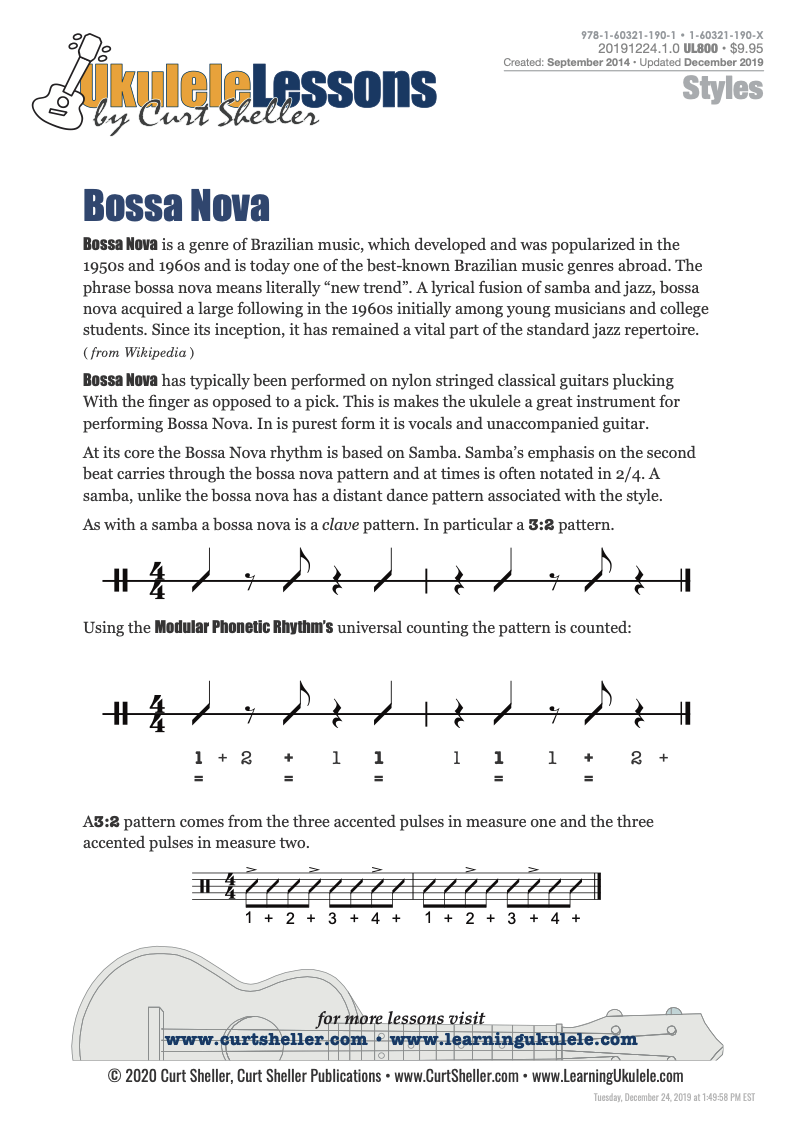
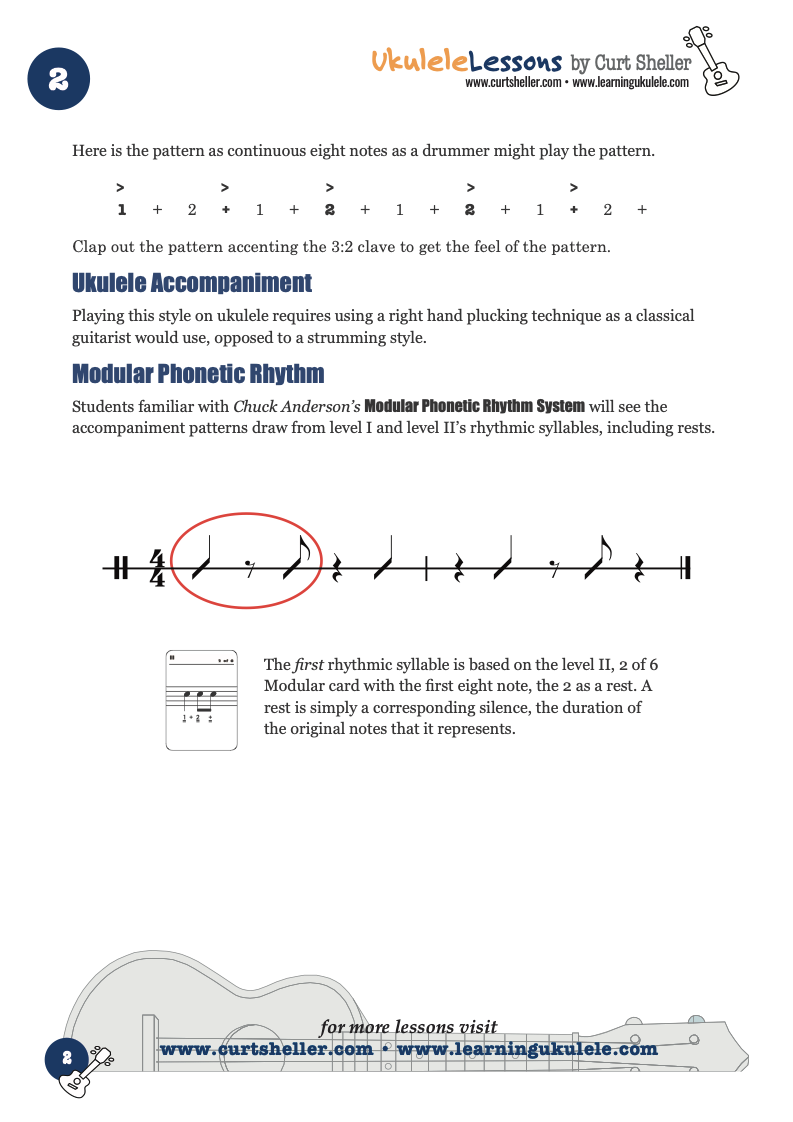
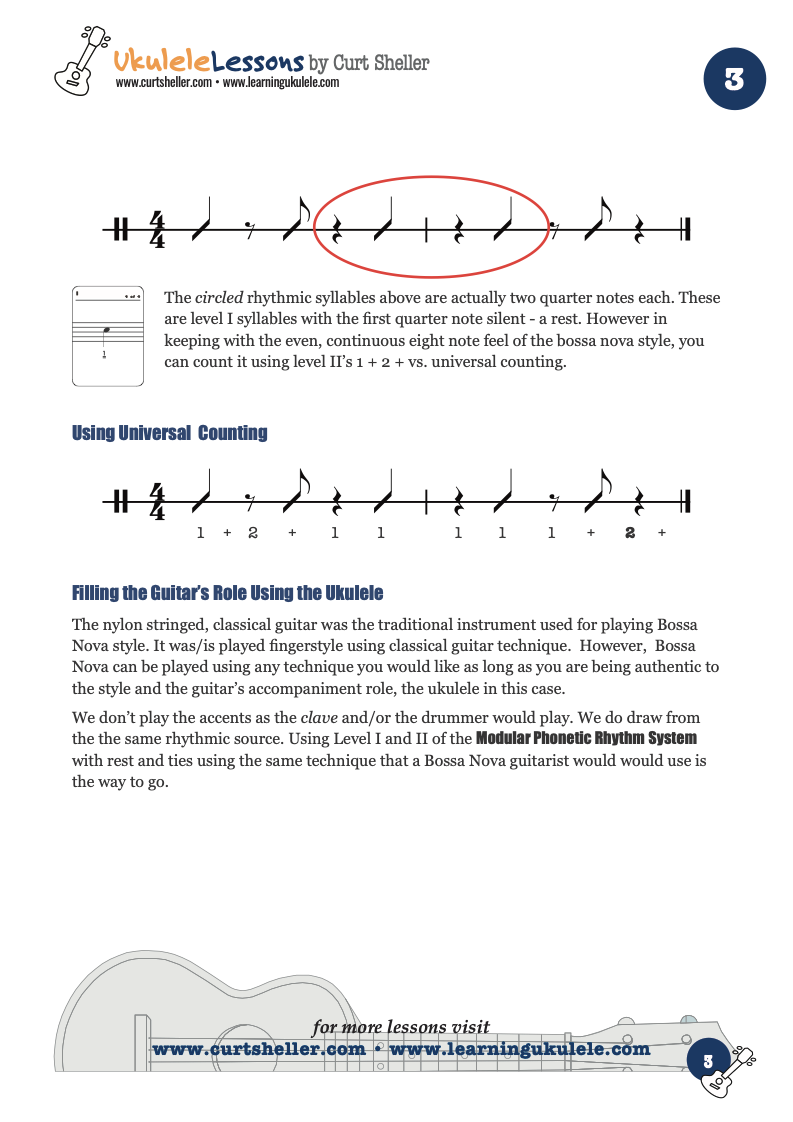
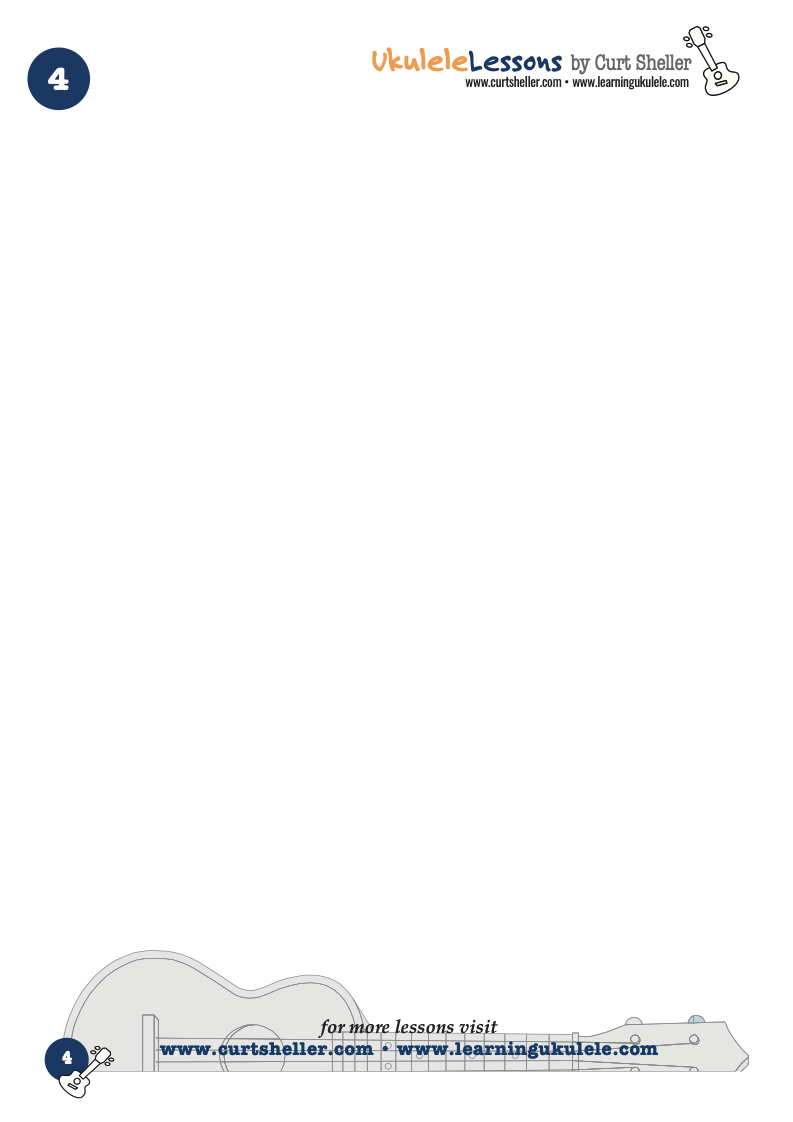




Bossa Nova is a genre of Brazilian music, which developed and was popularized in the 1950s and 1960s and is today one of the best-known Brazilian music genres abroad. The phrase bossa nova means literally “new trend”. A lyrical fusion of samba and jazz, bossa nova acquired a large following in the 1960s initially among young musicians and college students. Since its inception, it has remained a vital part of the standard jazz repertoire.
Available for Premium Site Access Plans Only
Bossa Nova has typically been performed on nylon stringed classical guitars plucking With the fingers as opposed to a pick. This is makes the ukulele a great instrument for performing Bossa Nova. In is purest form it is vocals and unaccompanied guitar. At its core the Bossa Nova rhythm is based on Samba. Samba’s emphasis on the second beat carries through the bossa nova pattern and at times is often notated in 2/4. A samba, unlike the bossa nova has a distant dance pattern associated with the style.
As with a samba a bossa nova is a clave pattern. In particular a 3:2 pattern.
Bossa Nova is a genre of Brazilian music, which developed and was popularized in the 1950s and 1960s and is today one of the best-known Brazilian music genres abroad. The phrase bossa nova means literally “new trend”. A lyrical fusion of samba and jazz, bossa nova acquired a large following in the 1960s initially among young musicians and college students. Since its inception, it has remained a vital part of the standard jazz repertoire.
Available for Premium Site Access Plans Only
Bossa Nova has typically been performed on nylon stringed classical guitars plucking With the fingers as opposed to a pick. This is makes the ukulele a great instrument for performing Bossa Nova. In is purest form it is vocals and unaccompanied guitar. At its core the Bossa Nova rhythm is based on Samba. Samba’s emphasis on the second beat carries through the bossa nova pattern and at times is often notated in 2/4. A samba, unlike the bossa nova has a distant dance pattern associated with the style.
As with a samba a bossa nova is a clave pattern. In particular a 3:2 pattern.
Related Lessons, Videos, Lesson Series, Songs, Books & Reference Charts, Resources & Assets, Workshops are below.

"Modular Phonetic Rhythm" by Chuck Anderson represents a significant advance in the teaching and application of rhythm. Eliminating many inefficient aspects of rhythm education, Modular Phonetic Rhythm streamlines the traditional educational approach, resulting in a reflexive reaction to rhythm. This approach is applicable to all ages and to all styles of music.
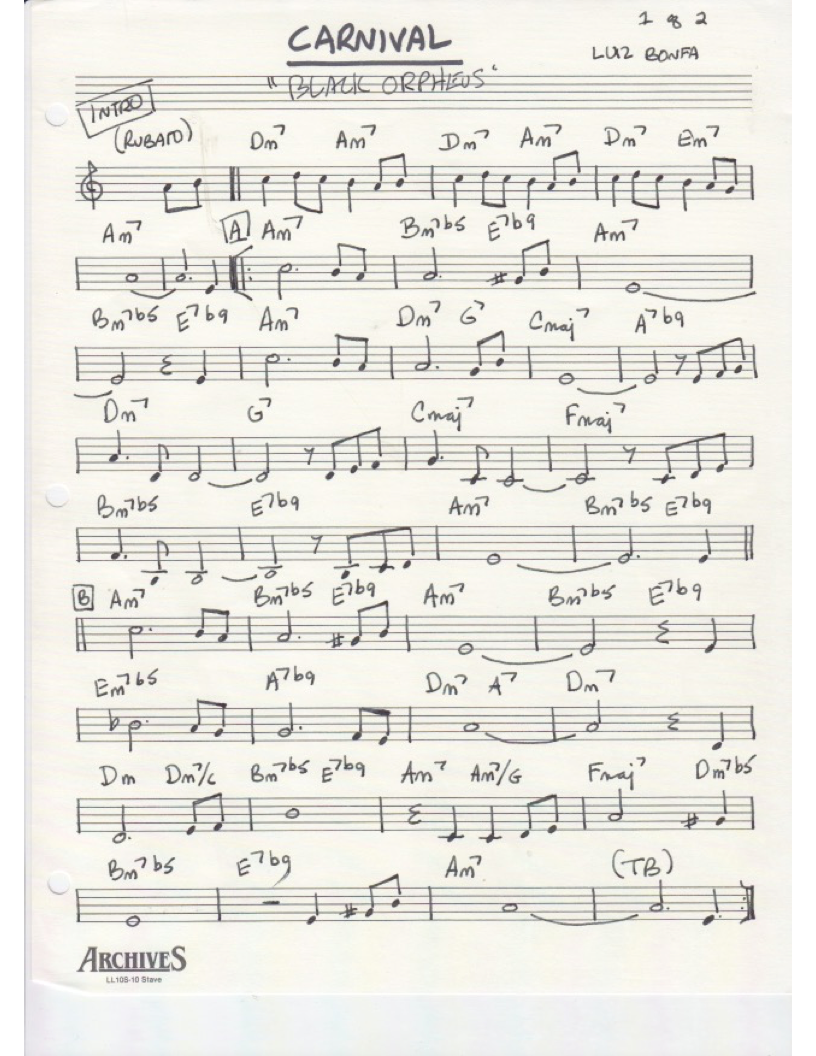
Black Orpheus (Portuguese: Orfeu Negro) is a 1959 film made in Brazil by French director Marcel Camus and starring Marpessa Dawn and Breno Mello. It is based on the play Orfeu da Conceição by Vinicius de Moraes, which is an adaptation of the Greek legend of Orpheus and Eurydice, set in the modern context of a favela in Rio de Janeiro during Carnaval.
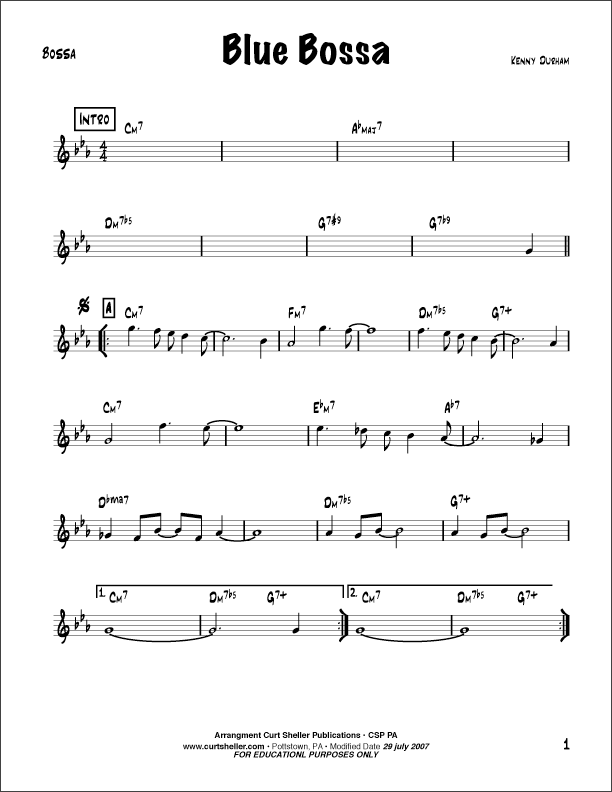
Blue Bossa is an instrumental jazz composition by Kenny Dorham (August 30, 1924 - December 5, 1972). It was introduced on Joe Henderson's 1963 album Page One. A blend of hard bop and bossa nova, the tune was possibly influenced by Dorham's visit to the Rio de Janeiro Jazz Festival in 1961. The tune has since been recorded numerous times by different artists, making it a jazz standard.
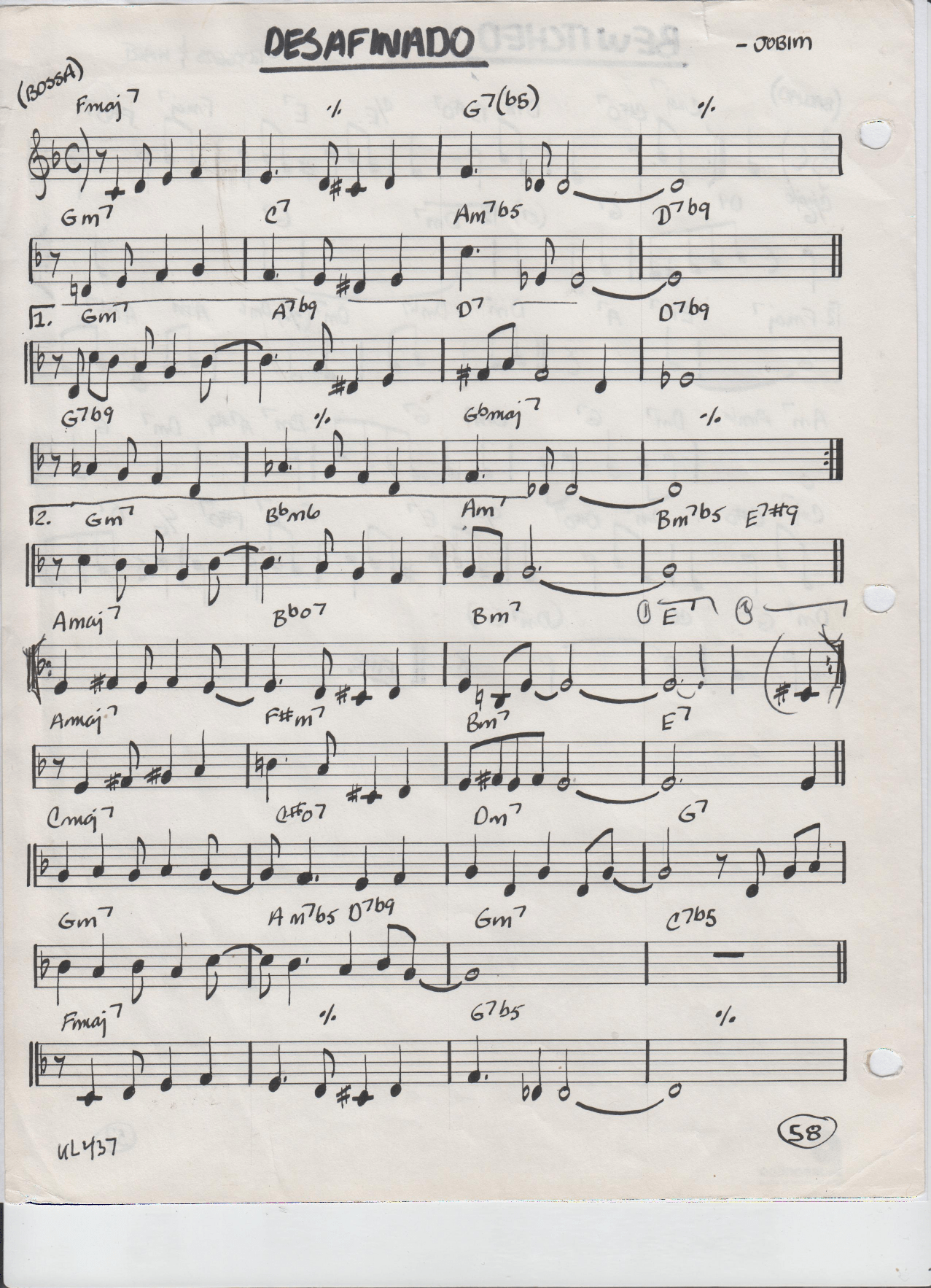
Desafinado, a Portuguese word (usually rendered into English as "Out of Tune", or as "Off Key"), is the title of a bossa nova song composed by Antônio Carlos Jobim with lyrics (in Portuguese) by Newton Mendonça.. The English language lyrics were written by Jon Hendricks and "Jessie Cavanaugh" (a pseudonym used by The Richmond Organisation). Another English lyric, more closely based on the original Portuguese lyric (but not a translation) was written by Gene Lees, and appears on some recordings as well.
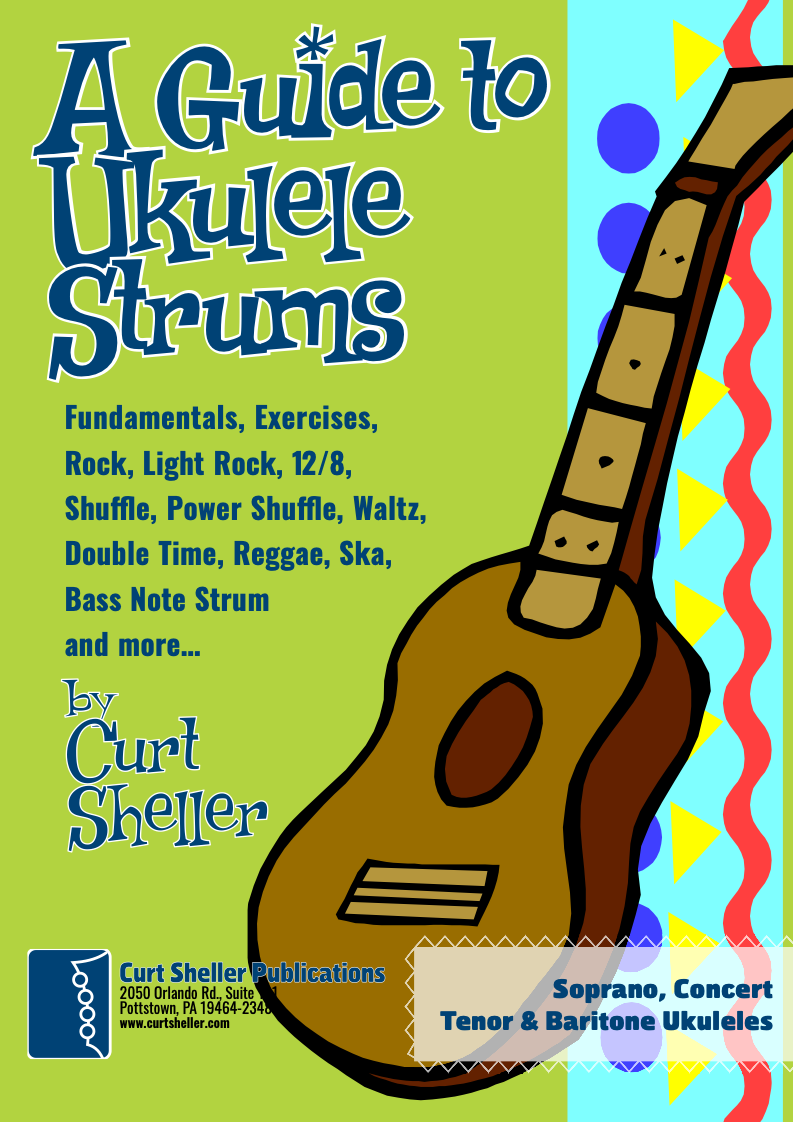
Learn a variety of strums and rhythmic patterns in wide range of musical styles. One of the first skills a ukulele player learns is the art and craft of strumming, playing rhythm. This refers to an accompaniment technique suitable for the singer, singer - songwriter or someone who plays a support role for another instrument.

Modular Phonetic Rhythm represents a significant advance in the teaching and application of rhythm. Eliminating many inefficient aspects of rhythm education, Modular Phonetic Rhythm streamlines the traditional educational approach, resulting in a reflexive reaction to rhythm.

Finally, learn the names of the notes of the ukulele fingerboard in C tuning .

Learn the six fingering principles to navigating the ukulele fingerboard. Fingering is one of the most universal topics. Book: Six Secrets of the Ukulele Fingering

Harmonic Analysis is the understanding of the functional sequence of chords. It is the process used to analyze the harmonic structure of a progression, song or composition. Book: Harmonic Analysis for Scale Selection and Chord Substitution

Learn to read single note melodies in the first/open position is a lot easier than you might think. Book: Ukulele – Reading Music Series – Primer

An organized collection of daily practice and reference material for the contemporary ukulele player for developing the vocabulary and knowledge necessary for single note playing. Book: Daily Practice Material for the Contemporary Ukulele
Checkout the Books & Reference Charts for additional Handy, Dandy Reference Charts.

Ukulele Fingerboard Chart for C Tuning, Low or High G – G C E A

Ukulele Fingerboard Chart for G Tuning, Low or High A – D G B E

A handy reference chart of all 15 major and relative minor key signatures. US Letter 8.5 x 11 sized (ANSI-A), A4
Checkout the Books & Reference Charts for additional Handy, Dandy Reference Charts.



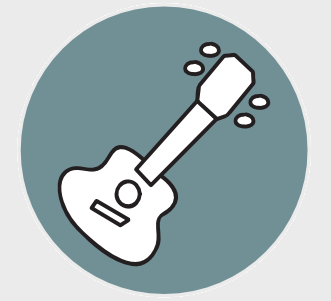
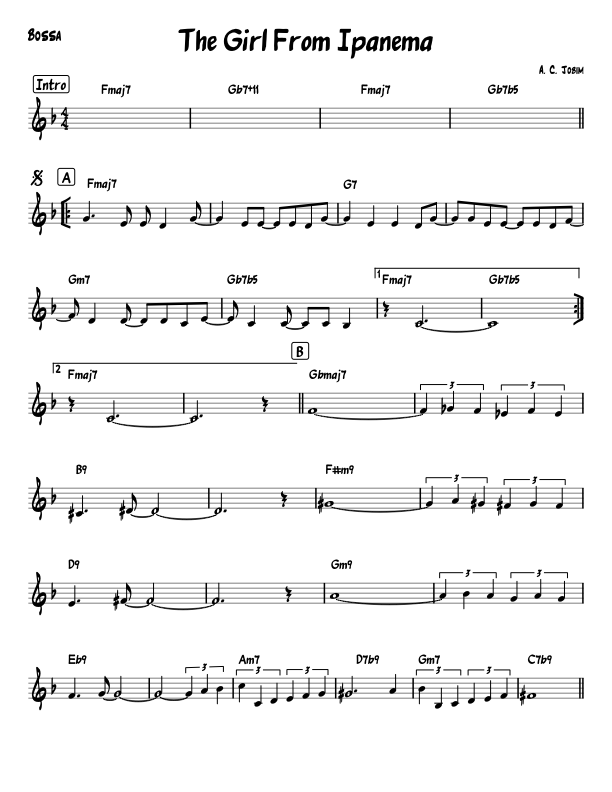
.jpg)